Although there’s not much new growth in the gardens in winter, as our damp mild weather continues, various species of fungi continue to pop up around the property. This morning I found a small colony of Caulorhiza umbonata, also known as the ‘Redwood Rooter’ mushroom growing underneath a grove of coast redwoods (Sequoia sempervirens) near the house. This species was previously known as Collybia umbonata.
This mushroom species is typically found singly or in small clusters and fruits from early to mid-winter. It is usually the only mushroom larger than 2 inches in diameter that is regularly found growing at the base of our decay-resistant coast redwood trees.
When these mushrooms first appeared, initially I presumed they might be a type of waxy cap mushroom, however, both the color, and variety of cap shapes throughout the lifestage of this species didn’t seem to fit with any of the waxy cap mushrooms I could find described.
When young, it’s clear that the ‘Redwood Rooter’ has a conical cap shape, similar in appearance to Hygrocybe conica, or the ‘witch’s hat’.
However, as this mushroom matures the cap becomes more umbonate in appearance.
As the mushroom ages further the cap margin curls upward, sometimes markedly so, as shown below.
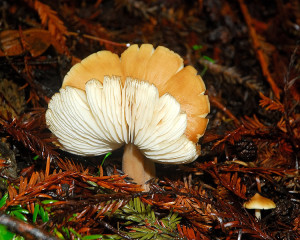
The curled cap of a mature Caulorhiza umbonata (left) compared to the umbonate cap of a young specimen (right)
The name ‘Redwood Rooter’ refers to the tremendous length of the stipe, or stem. Caulorhiza umbonata commonly roots one to three feet into the rich, acidic, deep humus found beneath the redwood trees. The stem length above ground is perhaps only 2-4 inches, but the extent of the root below the soil surface is quite remarkable. I attempted to excavate a specimen with the entire stem intact, but unfortunately, despite my best efforts, I still managed to snap the last part of the stem.
This agaric, or gilled, mushroom species is quite large, and easily noticed underneath the redwoods where little else, other than moss and redwood sorrel, grows.
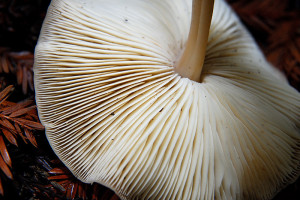
The creamy white gills are easily observed beneath the cap of mature specimens of Caulorhiza umbonata
The cap diameter for these specimens ranges from approximately 2 to more than 5 inches across in larger specimens. As the margin of the cap everts, the beautiful gills beneath are revealed.
In addition to its association only with redwood trees here, the keys to identifying this species were its extensive ‘tap root’, pale gill color, cap shape (conical in immature specimens, and umbonate when mature), and its white spore print.
Little seems to be known in regards to toxicity for this species, but as the ‘Redwood Rooter’ is quite common in this part of Northern California at this time of year, mycologists presumed that Caulorhiza umbonata is not significantly toxic.
I wonder what other fabulous fungi we’ll find in our woods this winter?

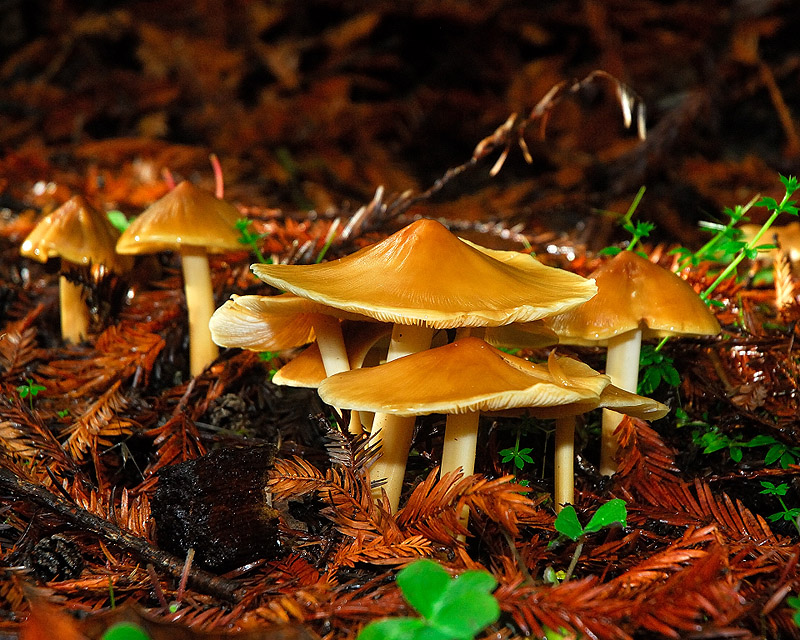
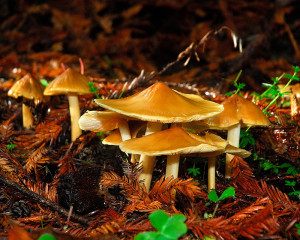
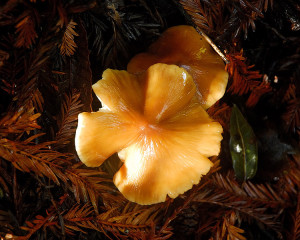
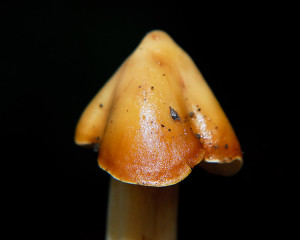
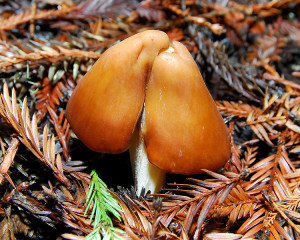
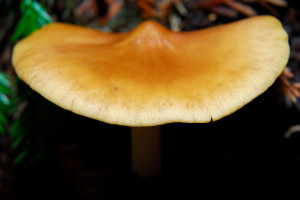
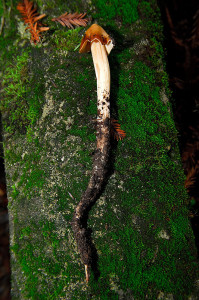
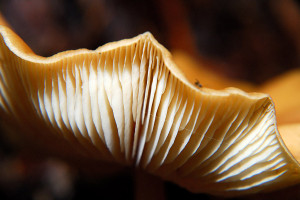

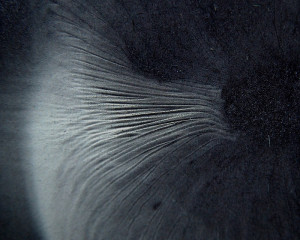
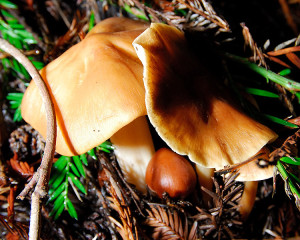







I don’t know much about mushrooms, except to only eat ones I buy in the store ( since I don’t know much about them). This is an interesting post. Sometimes I have amazing fungi growing in my garden, and I am curious about them. Do you know a book or reference source for someone like me?
As a general wild mushroom guide, there is the National Audubon Society Field Guide to North American Mushrooms. This book is helpful as a visual guide, and at least may help get you close to the right mushroom group for the species you’re trying to identify. Most libraries should have a copy (also available through online retailers like Amazon). For online resources I often rely on MushroomExpert.com, Mushroomobserver.org, and Mykoweb.com (Mykoweb is more California specific for me). These sites have online identification keys (lists of questions that direct you thus…if answer to the question about your mushroom is 1, then go to 2…if not 1, go to 3…and so on). Eventually, hopefully, you come up with some possible candidates. However, that said, mycology can be tough. There are a lot of look-alike mushrooms out there, and the keys do require you to become familiar with basic morphological, and mycological, terms. However, with some patience, and Google wizardry, you can at least often narrow down the genus! Also, learn how to make spore prints! They’re fun, they’re pretty, and can tell you a LOT about the species of mushroom you have!
http://www.mushroomexpert.com/spore_print.html
A very informative post with beautiful pictures. You certainly make fungi sound much more interesting then my biology professor 😉
Ah, so that’s what that is! There really are a lot of different mushrooms here in CA. And in my garden, for all that…
Great photos! It’s always tricky in the dark areas under the redwoods.
Thanks for the tips on sources for mushroom info. I thought about you today when I came across a colony of mushroom in my garden. I’m going to the library tomorrow. Thanks!
What beautiful photos, and I also learned a new word: umbonate. Thanks for an informative post. It must be wonderful to have coastal redwoods practically in your backyard.
Thanks for the great mushroom posts. It’s good to see the diversity in our mushroom community instead of just, oh look a mushroom.
Yes, new word! umbonate, having an umbo, a rounded elevation. More than one umbo are umbones. Akin to umbilicus, navel. I love new words. And interesting detailed posts that go into depth – literally!! – on a topic. I’ll have to see if I can find any of these Caulorhiza umbonata in our neck of the woods.
The lighting in those photos are incredible! I saw a book at Larner Seeds when I was there about using mushrooms for dyeing and cooking. A quick google reveals it as All That the Rain Promises and More. Some wacky photos.